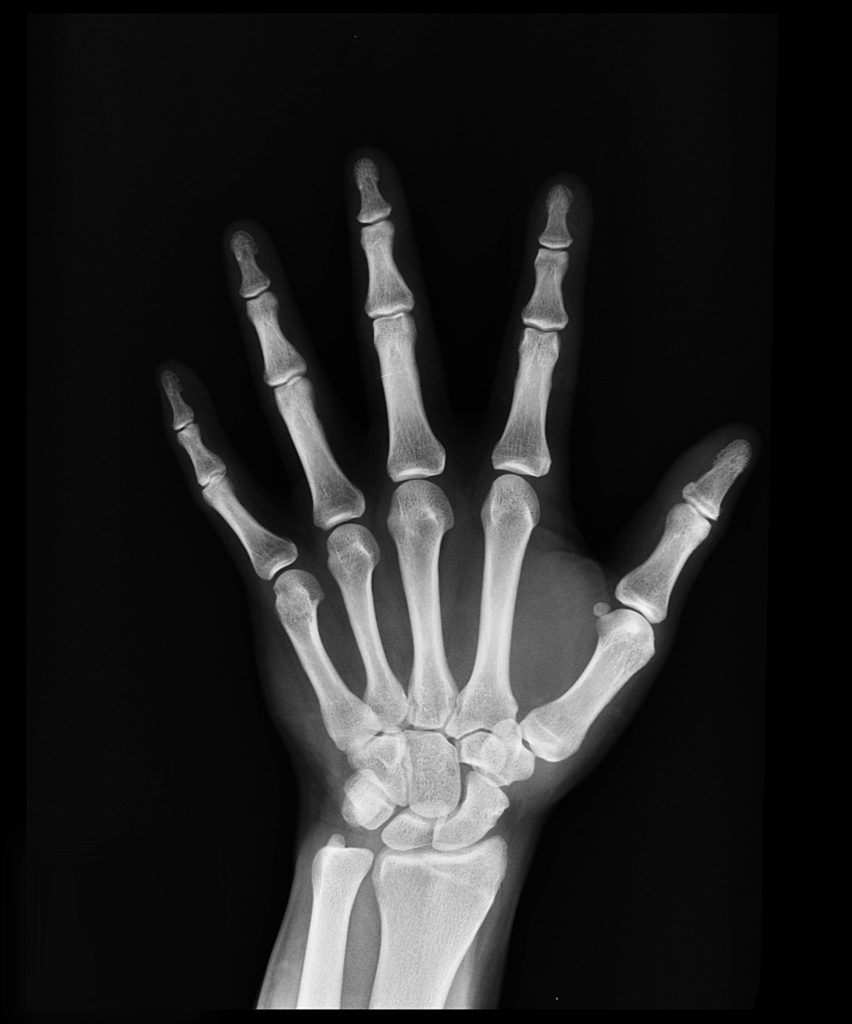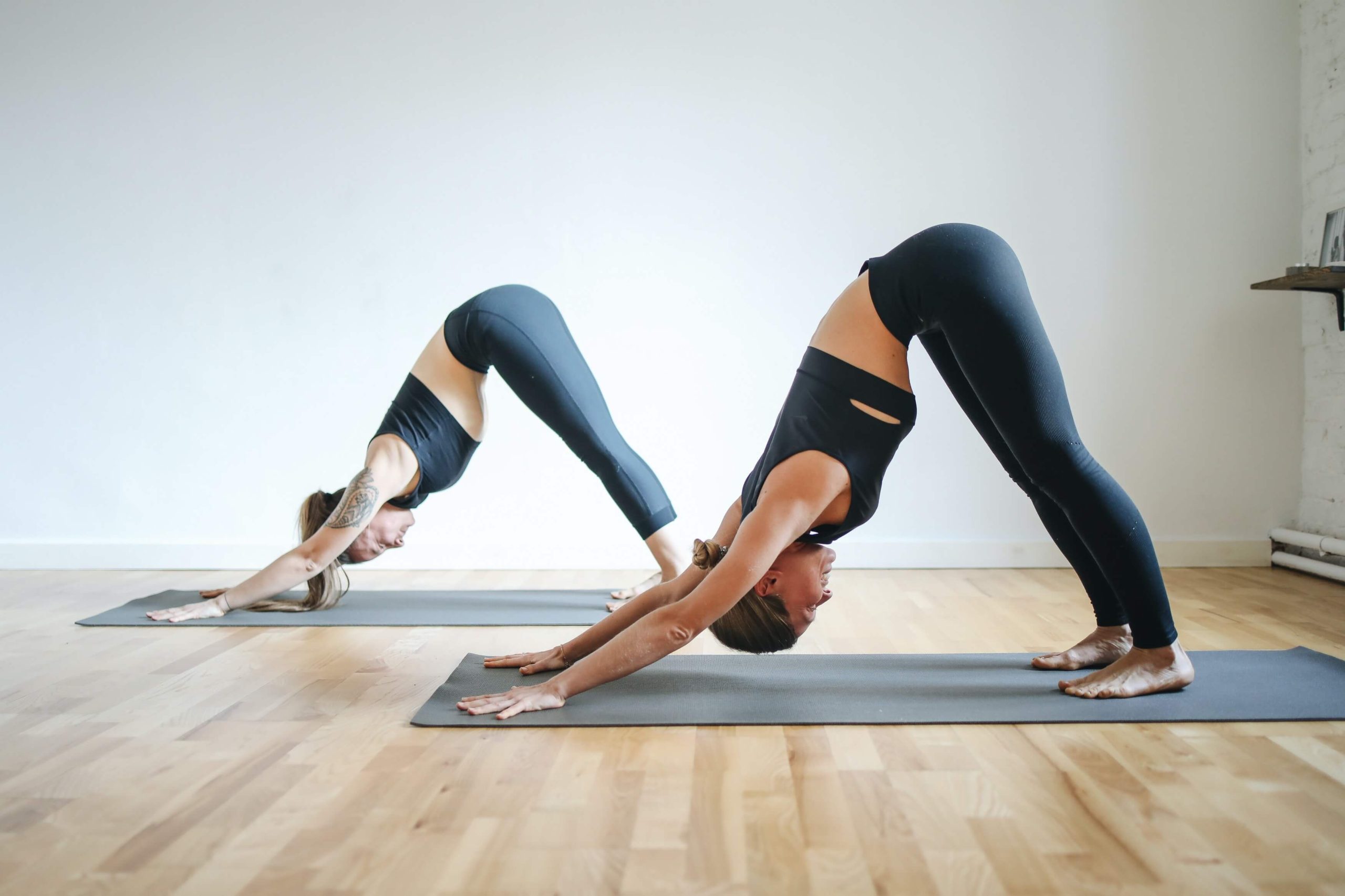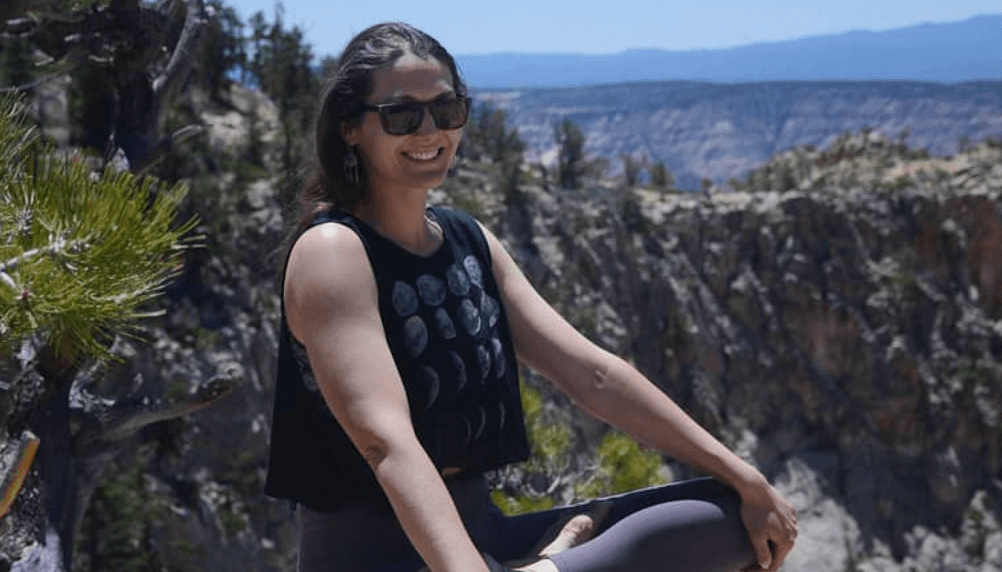Bone density is something most people don’t think about until they get older. But surprisingly, we should be aware of our bone health early on in life to ensure we have a long healthy, and active life without any physical hindrances down the line.
Maintaining bone density can be achieved in a variety of ways like regular exercise, consuming vitamin D and calcium, living a healthy lifestyle, and also practicing yoga.
Let’s learn how yoga for bone density can help maintain healthy bones throughout your entire life.
What is Bone Density?
Bone density is basically how thick and strong our bones are. People with weak, brittle bones can be diagnosed with osteoporosis or other bone diseases. Our bones are made from a porous material and made up of minerals like calcium and zinc.
We think of bones as hard and white, but that’s after they have dried out outside of a body. Bones inside our body are very much alive and much different than the bones at the museum. They are an important functioning part of a healthy body.
Bone density is typically measured through a non-invasive test known as a bone density scan or DEXA (Dual-Energy X-ray Absorptiometry).
Understanding and monitoring bone density is essential for assessing and addressing the risk of osteoporosis and fractures, particularly as people age.
Why Is Yoga For Bone Density Important?
The density of our bones is very important because brittle bones are more likely to break. As we age, we naturally lose a bit of bone density over time. Weak bones have a lower amount of minerals to keep them strong.
Bone density is important to prevent injuries from falls or vigorous exercise.
Low bone density can cause you to develop osteoporosis or rickets. People with osteoporosis are more likely to get bone fractures or full breaks from activities that might not affect healthier people. Osteoporosis is also more common in women than in men.
Bone density is crucial for several reasons:
- Structural Support: Bone density provides the structural framework for the body, giving it stability and support. Strong bones are necessary for maintaining posture, standing, and engaging in physical activities.
- Protection of Vital Organs: Bones protect vital organs, such as the skull protecting the brain, the ribcage safeguarding the heart and lungs, and the spine guarding the spinal cord.
- Mobility and Movement: Healthy bone density is essential for mobility and movement. It allows muscles to attach to bones, facilitating joint movement and enabling everyday activities and physical exercise.
- Mineral Storage: Bones act as a reservoir for essential minerals, including calcium and phosphorus. These minerals are released into the bloodstream when needed for bodily functions like muscle contractions and nerve signaling.
- Blood Cell Formation: The bone marrow within certain bones is responsible for producing red blood cells, white blood cells, and platelets, which are vital for oxygen transport, immune function, and clotting.
- Hormone Regulation: Bones play a role in regulating hormones, such as insulin and osteocalcin, which influence energy metabolism and blood sugar regulation.
- Long-Term Health: Maintaining healthy bone density is crucial for preventing bone-related conditions like osteoporosis, which can lead to fractures, pain, and reduced quality of life, especially in older adults.
- Quality of Life: Strong bones contribute to overall well-being and an improved quality of life. Adequate bone density supports independence and the ability to carry out daily activities with ease.
Besides walking, running, and weight bearing exercise, practicing yoga for bone density can help to both maintain and increase the mineral content of your bones.

Does Low Bone Density Only Affect Elderly People?
Low bone density, commonly associated with conditions like osteoporosis, does not exclusively affect elderly individuals. While it is true that the risk of developing low bone density and related fractures increases with age due to the natural process of bone loss over time, it can also affect younger people.
Factors such as genetics, hormonal imbalances, chronic medical conditions, dietary deficiencies, and a sedentary lifestyle can contribute to reduced bone density in individuals of all ages.
Therefore, it’s crucial for people of all life stages to prioritize bone health through a balanced diet, weight-bearing exercise, and other preventive measures to reduce the risk of low bone density and its associated complications.
People over 65 are recommended to have bone density tests. But people of all ages can be at risk.
Women who are pregnant should be diligent in getting the recommended amount of calcium during pregnancy because a lack of calcium in pregnancy can result in low bone density later in life.
Menopausal women are also at risk for osteoporosis, this stage of life can happen at different times of life regardless of age.
Here are some other reasons why you might want to consider getting your bone density checked.
- If you’ve broken a bone over 50 years of age.
- Mysterious back pain
- If you’ve gotten shorter by an inch
- Bad posture
- Your menstrual periods have disappeared or are irregular
How to Increase Bone Density Naturally with Yoga
Naturally increasing bone density involves adopting a holistic approach that focuses on lifestyle, nutrition, and exercise choices.
Yoga is a great method for increasing bone density because yoga is both low impact and weight-bearing activity. Exercises that include weightlifting and strength training are ideal for bone strength, this goes back to the adage “If you don’t use it, you lose it!”
Harvard Medical School led a study to specifically test the effects of yoga on bone density. 227 participants joined the study and followed yoga poses on a DVD every other day for 2 years. The scans at the end of the trial compared to the ones taken at the beginning showed that participants “showed significant increases in bone density” in the spine, and minimally in the hip. Read more about the study here.
Regular weight-bearing exercises are another key component of boosting bone density. Activities like walking, jogging, dancing, and weightlifting stimulate bone growth and strengthen existing bone tissue. Aim for at least 30 minutes of weight-bearing exercise most days of the week. Resistance training with weights or resistance bands can also help by putting stress on bones, prompting them to become denser and stronger. Lastly, avoid habits that can harm bone health, such as smoking and excessive alcohol consumption, as they can contribute to bone loss. By incorporating these habits into your lifestyle, you can naturally promote and maintain healthy bone density throughout your life.
Yoga Poses and Techniques to Increase Bone Density
Yoga is a wonderful practice to keep our whole body, mind, and spirit in optimal condition. Starting and keeping a weekly or daily yoga practice earlier in life can keep us stay healthier as we age, especially if we maintain a regular yoga practice!
People with osteoporosis who are at risk should consult their physician before trying physical activity.
- Focus on weight-bearing poses, like table top, plank, downward facing dog, lunges and all warrior poses.
- Add weights like ankle weights or small dumbbells to increase strength.
- Work on repetition to build strength, doing sun salutation every morning is a great avenue to healthy bones and overall physical health.
- Spinal twists to strengthen and lengthen the spine and spinal column
- Simple balances like tree pose work on many muscles at the same time. Balance is a big issue as we age so practicing any balance regularly will have good effects.
- Most importantly: TAKE IT EASY If this is your first time diving into yoga, take it easy, and don’t jump into hot or power yoga as you might hurt yourself if you are suspicious of your bone density. Talk to your doctor then talk to your yoga teacher to see what is right for you.
Supplements To Help Increase & Maintain Bone Density
Along with physical exercise and eating a balanced diet, you can also ensure that your bones will get the minerals they need with supplementation.
The number one supplement is Calcium, which can be combined with Vitamin D to make the absorption better, adults need 700 mg of calcium a day, and pregnant women need at least 1000 mg a day.
Going outside in the sun can also make your body naturally absorb Vitamin D. Vitamin D increases calcium absorption.
Magnesium Is also important in ramping up vitamin d absorption which can in turn increase calcium consumption in the body.
Zinc is also an important bone-building mineral.
Watch out for too much Vitamin A which can inhibit calcium absorption and eventually cause osteoporosis or other bone diseases.
References
https://en.wikipedia.org/wiki/Bone_density
https://www.wisegeek.com/what-is-bone-density.htm#
https://www.nhs.uk/live-well/healthy-body/food-for-strong-bones/
https://www.webmd.com/osteoporosis/guide/bone-mineral-density
https://www.health.harvard.edu/womens-health/yoga-another-way-to-prevent-osteoporosis
https://www.health.harvard.edu/womens-health/yoga-another-way-to-prevent-osteoporosis
https://www.medicalnewstoday.com/articles/325903#magnesium-and-zinc



0 Comments